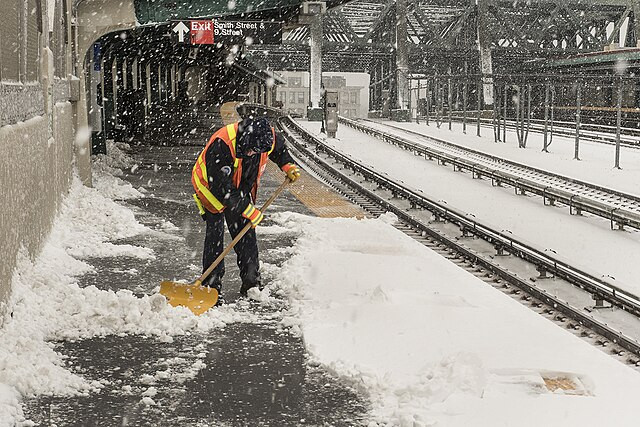A powerful storm system swept across the Eastern United States over the weekend, unleashing torrential rains, dangerous flash flooding, and heavy snowfall from the Southeast to the Northeast. More than 110 million Americans were under weather alerts as the system delivered destructive winds, forced evacuations, and left hundreds of thousands without power.
Flash flood warnings were in effect across Kentucky, Tennessee, West Virginia, and North Carolina. In Kentucky, Governor Andy Beshear declared a state of emergency and requested federal assistance, stating that the entire state "is under significant threat from midnight to 4 a.m." He also reported widespread flooding, particularly around Panbowl Lake in Jackson, where a hospital and nursing home were evacuated as a precaution.
Emergency responders were stretched thin as water rescues surged across the region. In Louisville, authorities conducted nearly 30 rescues and anticipated more as floodwaters continued to rise. The Louisville Metro Police Department said its river patrol and diving teams were working with local fire departments to reach those stranded. Similar efforts were underway in Simpson County, Kentucky, and Macon County, Tennessee, where rising waters forced the evacuation of more than 50 nursing home residents.
Rainfall totals ranged between 4 to 7 inches in some areas, with additional precipitation expected through Sunday evening. Clarksville, Tennessee, saw nearly 4 inches of rain in a short period, with Mayor Joe Pitts calling the flash flooding "alarming." The National Weather Service extended a flash flood emergency for multiple counties in West Virginia and southwestern Virginia, where rising rivers prompted urgent evacuation orders.
In Virginia, Lieutenant Governor Winsome Earle-Sears announced that National Guard troops were deployed to assist in flood response. The town of Richlands, in Tazewell County, was among the hardest hit, with police urging residents to evacuate immediately. "Multiple areas of the town are currently experiencing flooding, with the river expected to rise even higher," the local police department said.
West Virginia Governor Patrick Morrisey also declared a state of emergency in 10 counties as evacuations intensified. The Bluestone River experienced major flooding near Spanishburg, and authorities warned that additional landslides and rockslides could occur in areas with saturated ground.
Alongside the flooding, strong winds and winter weather impacted large portions of the country. More than 86 million people across 22 states were under high wind alerts, with gusts of up to 60 mph recorded in parts of the Northeast and Mid-Atlantic. At Atlanta's Mercedes-Benz Stadium, wind speeds reached 71 mph early Sunday. Power outages climbed throughout the day, with more than 300,000 customers in Alabama, Kentucky, Mississippi, and Virginia left without electricity.
The storm system also brought significant snowfall and ice accumulation to the Northeast. Snow began falling across portions of New York and New England on Saturday, with totals expected to exceed a foot in parts of northern Vermont, New Hampshire, and Maine. Cities like Hartford and Boston were bracing for 3 to 6 inches of snow before a transition to sleet and rain created hazardous road conditions. The National Weather Service warned that the combination of snow and ice could lead to dangerous travel, downed trees, and power outages.
Further south, the severe weather threat persisted as the storm system advanced. The National Weather Service issued tornado warnings for parts of Georgia and the Carolinas, cautioning that the storm could produce damaging winds and isolated tornadoes as it moved eastward toward the Atlantic.
In the Midwest and Upper Plains, extreme cold accompanied the storm, with wind chills dropping as low as minus 60 degrees in portions of Montana, North Dakota, and Minnesota. The storm marked the 10th polar vortex event of the season, with temperatures plunging well below zero across large portions of the region.
Meanwhile, in Southern California, dry weather returned after the region endured its strongest storm of the year. Officials continued to monitor hillsides scarred by recent wildfires, warning that the risk of rock and mudslides remained high.
As emergency crews worked around the clock to respond to flooding, snowstorms, and power outages, officials urged residents in affected areas to remain vigilant. "Don't try to outrun a flood or anything," Earle-Sears warned. "Get to higher ground if you need to."






